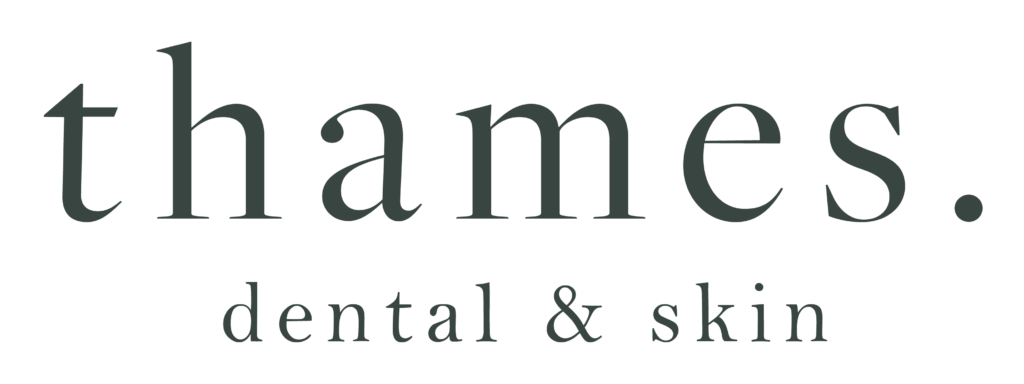Blog Post
LED Masks, Peels and ‘Glass Skin’ Trends: What Really Helps Your Skin - and What Doesn’t
If you spend even a few minutes on Instagram or TikTok, you’ll see people talking about glowing skin, LED masks, chemical peels and “glass skin”. It looks simple online, but for most people in real life – including many of our patients here in Thames Ditton – it quickly becomes confusing. This article breaks things down in plain English so you can understand what actually helps your skin look clearer, calmer and more even.
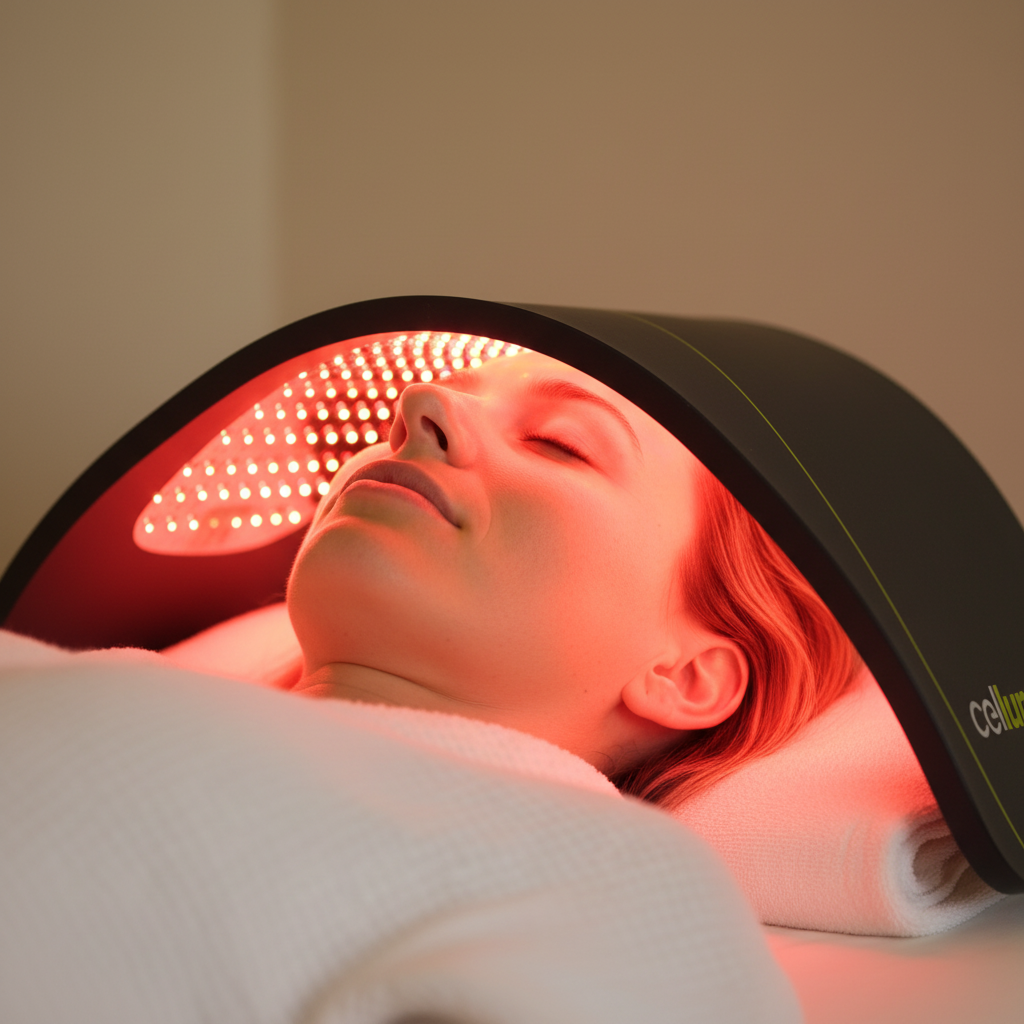

Blog Post
LED Masks, Peels and ‘Glass Skin’ Trends: What Really Helps Your Skin - and What Doesn’t
Why glowing skin feels so confusing right now
The skincare world is full of hype. There are endless at-home devices, acids, masks and “miracle” treatments.
But the truth is:
- Not all LED masks work in the same way.
- Chemical peels vary massively in strength and formulation.
- Your skin barrier needs steady support, not sudden big jumps.
- What works for someone online may not work for you.
- You can spend a lot of money and see very little change.
We regularly hear patients say things like:
- “Do LED masks actually work?”
- “What’s the difference between a home peel and a clinic peel?”
- “Should I buy a gadget or just book a proper treatment?”
With so much noise out there, it’s hard to know where to begin.
If all of this feels overwhelming, you’re not alone.
It’s why we created Glow Club – a gentle, structured plan combining LED therapy and light peels, so you don’t have to figure everything out on your own. It starts with simple LED sessions from £50, and builds gradually as your skin becomes calmer and more balanced.
LED masks vs clinic LED therapy: the science made simple
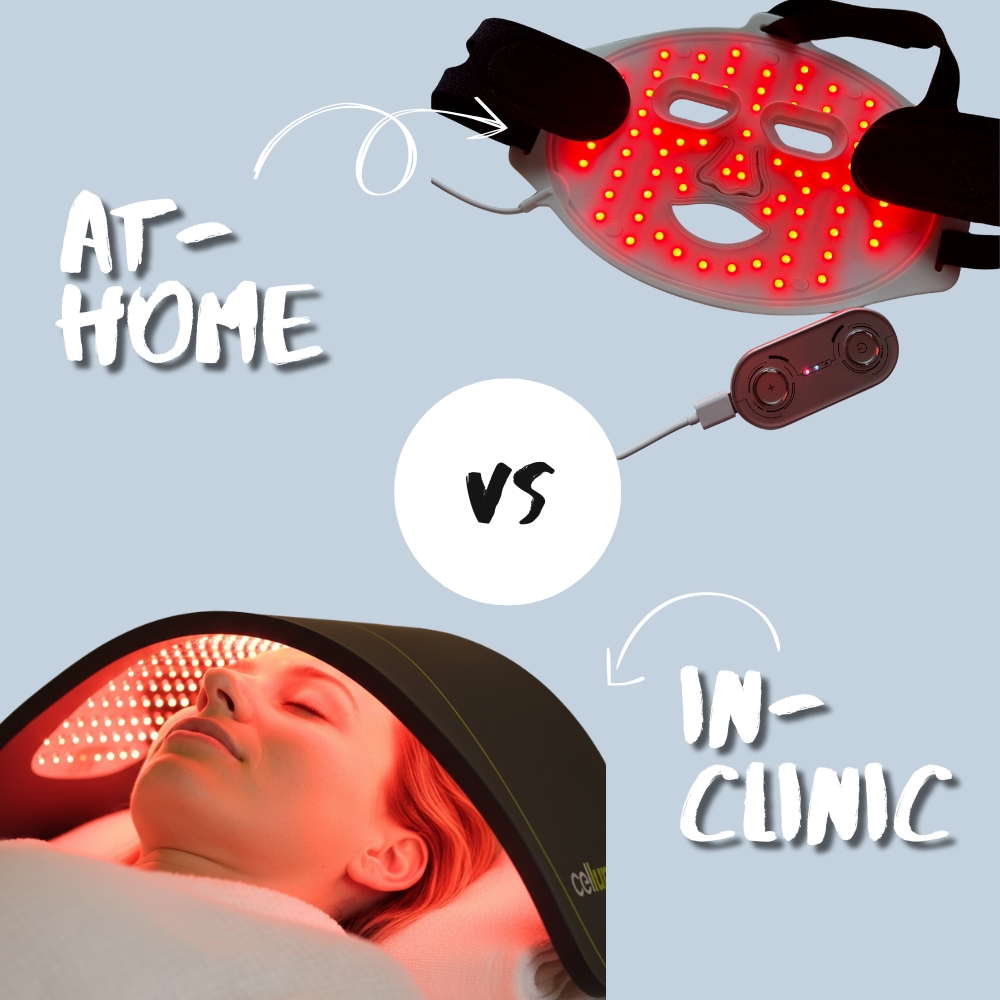
LED light therapy is one of the most researched, non-invasive skin treatments available today – but the strength and quality of the device makes all the difference.
Medical-grade LED lights, like the Celluma Pro system we use in clinic, focus on specific wavelengths that have solid clinical research behind them:
Red light (around 630–660 nm)
This is absorbed by fibroblasts – the cells responsible for collagen. It helps to reduce inflammation, support collagen formation, improve healing and calm reactive skin.
Near-infrared light (around 830–850 nm)
This penetrates deeper into the skin to support tissue repair, calm redness, reduce sensitivity and strengthen the skin barrier.
These wavelengths need to be delivered at the right energy level (known as irradiance) and for the right length of time to create a genuine biological response in the skin. This is where clinic devices stand apart.
Why clinic LED treatments usually work better
Professional devices are designed to deliver:
- Stronger, consistent power.
- Accurate, medical-grade wavelengths.
- Enough energy to trigger real cellular change.
- Even coverage across the whole treatment area.
- Carefully paired treatment serums to boost LED absorption.
Most at-home LED masks use lower power, have far fewer LEDs and often don’t reach the therapeutic threshold needed to create meaningful change in the skin. They can give a short-term brightening effect, but rarely match the long-term results seen with in-clinic LED.
Thinking about a home LED mask? Here’s what to look for
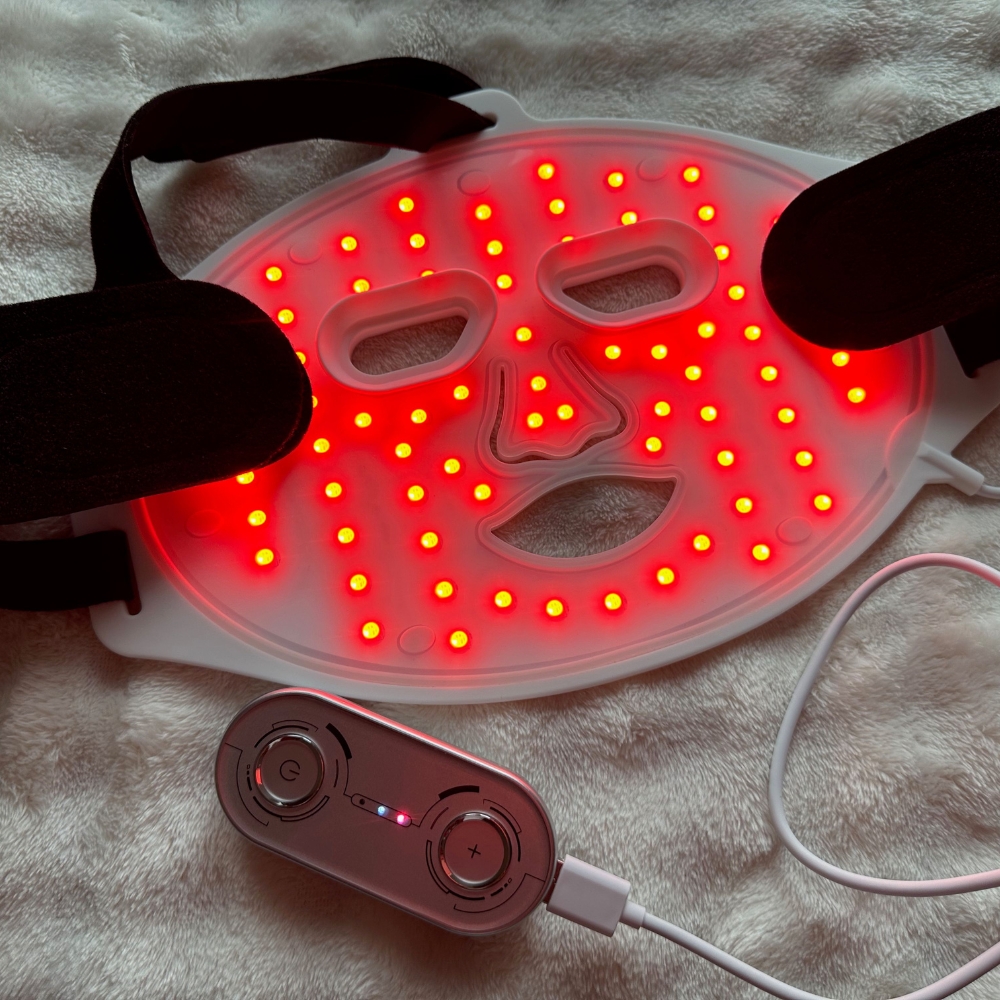
If you are considering a home-use device, we usually suggest checking:
- That the wavelengths are clearly listed (around 630–660 nm for red light and 830–850 nm for near-infrared).
- That the energy output (irradiance) is stated. Many home devices sit around 5–10 mW/cm², while clinic devices are commonly 30–60 mW/cm² or higher.
- That the device carries a CE mark for UK safety.
- That there is good, even coverage across the face rather than a few scattered LEDs.
If a brand doesn’t mention wavelengths or power output at all, it’s usually a sign that the device is more about “glow” marketing than genuine skin results.
If you’re not sure whether to invest in a home device or try a course of professional treatments, we’re happy to talk you through the options and what’s realistic for your skin.
Chemical peels: gentle, controlled and clinically effective
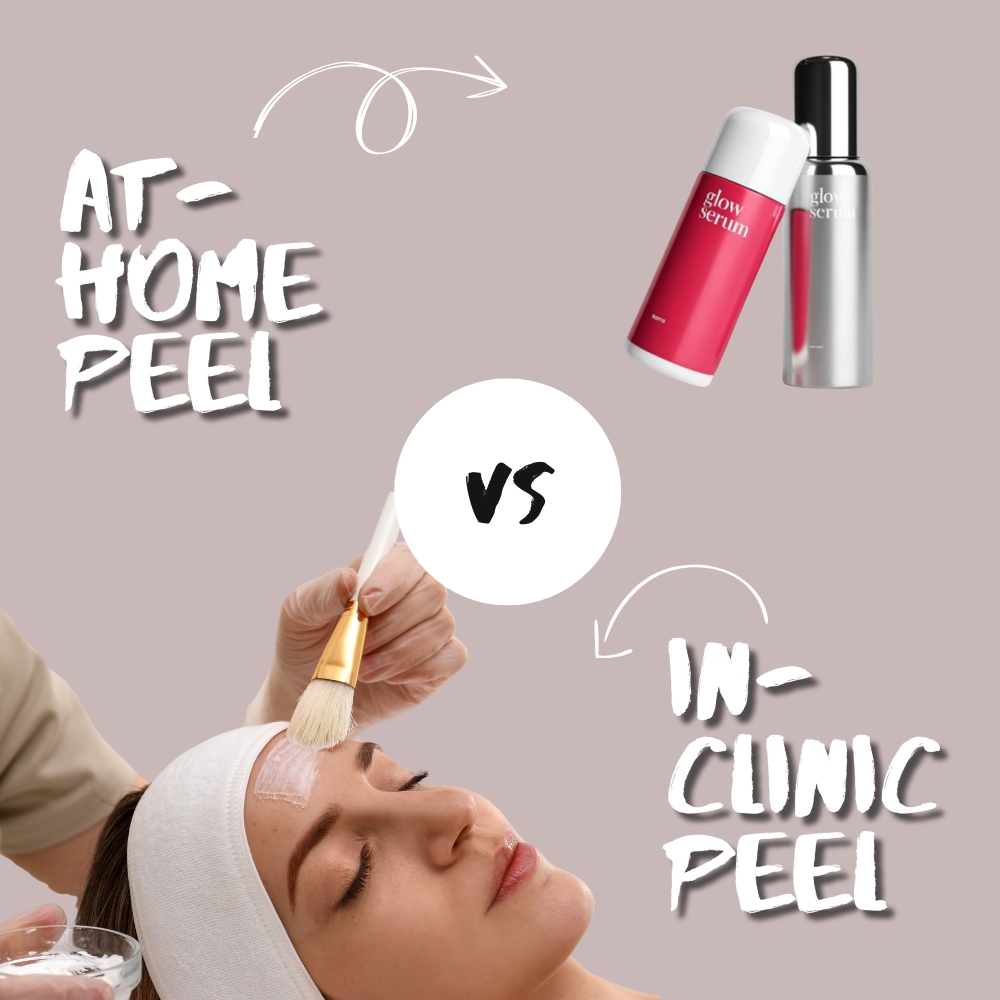
Chemical peels are often misunderstood. People imagine the dramatic peel videos online, but in reality, professional peels are usually light, controlled and designed to work with your skin – not against it.
A good clinic peel gently lifts dull surface skin, smooths roughness and refreshes the complexion without damaging the skin barrier.
Why clinic peels often work better than home acids
Professional peels are carefully formulated with:
- Predictable concentrations of active acids.
- Controlled pH levels for safer, more effective exfoliation.
- Buffering systems that reduce irritation.
- Formulas chosen to suit your skin type and sensitivity.
This makes them far more reliable for improving uneven tone, texture, congestion, pigmentation, dullness and early signs of ageing.
The problem with at-home acids and peels
High-street acids can help when they are used correctly, but there are a few common pitfalls:
- It’s easy to over-exfoliate and strip the skin barrier.
- Many products are too harsh for sensitive or reactive skin.
- Products may be formulated at safer (higher) pH levels, which makes them less effective but still irritating when overused.
- Viral “peeling solutions” are often used too often or layered with other actives, causing redness, stinging and breakouts.
It’s not that acids are “bad”, but rather that your skin needs the right strength, prescribed at the right time and supported properly afterwards.
In clinic, we often combine gentle chemical peels with LED therapy in the same visit, so the skin is soothed straight away and recovery is more comfortable.
Glow Club: a simpler, expert-led way to get clearer, glowing skin
Glow Club is our guided skin plan that combines medical-grade LED therapy and gentle peels — giving you clearer, calmer, more even-looking skin without the confusion of trying to do everything at home.
- LED therapy to calm redness and strengthen the skin.
- Light chemical peels to lift dullness and smooth texture.
- A step-by-step plan fully guided by Dr Theodora Bravis.
It’s ideal if you’re ready for steady, supported skin improvement rather than trends and guesswork.

Glow Club blends LED Light Therapy with light chemical peels in a gradual, structured way - giving you safer results and skin that improves month after month.
Dr Theodora Braivs
Frequently Asked Questions
Do LED masks really work, or are clinic LED treatments better?
Home LED masks can offer a mild boost in brightness, but most consumer devices don’t deliver enough power or the correct wavelengths to create deeper skin changes.
Medical-grade LED systems, like the Celluma Pro used in our Thames Ditton clinic, use clinically proven wavelengths (red and near-infrared) at higher strength, which helps calm inflammation, improve healing and strengthen the skin barrier more effectively.
What results can I expect from LED light therapy?
Most people notice calmer, less reactive skin, reduced redness, improved healing and a general boost in brightness. With regular sessions, LED can help with breakouts, early ageing, dullness and sensitivity. Results tend to build gradually and are best when combined with a steady skincare routine or gentle peels.
Are chemical peels safe for sensitive or reactive skin?
Yes – when they’re done professionally.
Clinic peels are light, controlled and tailored to your skin, using the correct pH and strength for safe exfoliation. We regularly treat sensitive skin, rosacea-prone skin and people who have had reactions to home acids. In most cases, clinic peels are gentler and more predictable than at-home products.
How do I know whether I need LED sessions, a peel, or both?
It depends on what your skin is doing.
LED is ideal if your skin feels red, irritated, inflamed or stressed.
Peels help more with dullness, congestion, pigmentation and uneven texture.
Many patients benefit from a combination – LED to calm and strengthen the skin, and gentle peels to brighten and smooth. This is exactly how our Glow Club programme is structured.
Can at-home chemical peels or acids replace a professional peel?
Most home acids are weaker, have higher pH levels and are designed for safety rather than results. They can help when used correctly, but many people over-exfoliate or mix too many acids, which leads to irritation and breakouts.
Clinic peels are safer, more controlled and offer clearer results because the strength, pH and formula are specifically chosen for your skin.
How many LED treatments do I need to see results?
Most people start with a course of 6 LED sessions, usually once or twice a week. After that, monthly maintenance sessions help keep the benefits going. If you’re joining Glow Club, your LED treatments will be paced for you so you get gradual, comfortable improvement.
Do LED light therapy and chemical peels work together?
Yes – and they work extremely well as a pair.
LED helps calm the skin, reduce redness and speed up recovery after a peel, while the peel helps remove dull surface skin so LED and skincare products work more effectively. This combined approach is one of the reasons Glow Club delivers such steady, long-lasting results.
Are your LED and peel treatments suitable for darker skin tones?
Yes. Both LED therapy and our gentle peels are safe for darker skin tones when carried out by an experienced clinician. We always assess your skin beforehand and adjust peel strength so that pigmentation is treated safely and effectively.
How do I book LED or peel treatments in Thames Ditton?
You can book online or get in touch if you’d prefer a chat about what your skin needs. We welcome patients from across Surrey and South West London, including Surbiton, Kingston, Esher, Cobham, Molesey, Hinchley Wood and Walton-on-Thames.
